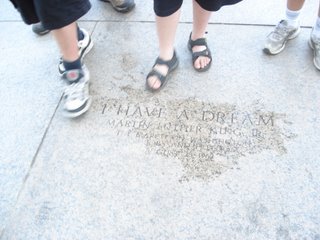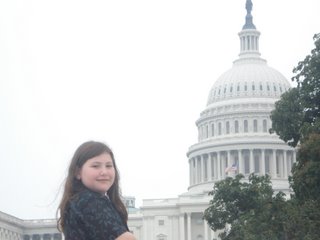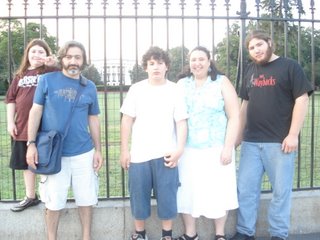The Bromberg-Barwins Go to Warshington




 1. On the steps of the Lincoln Memorial where Martin Luther King gave his "I had a Dream" speech. For us, one of the most moving places in DC.
1. On the steps of the Lincoln Memorial where Martin Luther King gave his "I had a Dream" speech. For us, one of the most moving places in DC.2. In the Museum of American History, a braille Playboy in the Ray Charles exhibit. He used to read Playboy, for the articles. Really. I would have thought a braille Playboy would have been either the setup or the punchline to a joke. Of course, I read Beowulf for the pictures, so who am I to talk.
3. In the extraordinary Museum of the American Indian. A very beautiful building by Douglas Cardinal, built of sand-coloured stone, its wavy, landscape inspired shapes in opposition to the symmetrical neo-classical buildings that dominant the institutional buildings in DC. This picture is a visual poem comprising the names of the Native American peoples that have existed in the Hemisphere. Three projections of names on a huge black wall. Very moving. Another very striking use of plain text was the Vietnam Memorial. All those names of the dead. When my sons and I walked by (the irony wasn't lost on me, walking with my sons along a list of lost sons) people were touching specific name and weeping.
4. My daughter in front of the Capitol
5. The Bromberg Barwin's in front of the White House. We looked better in the surveillance cameras.
6. We couldn't take pictures, but my eldest son and I went to the Holocaust Museum. We hardly spoke. There was nothing to say, in a way. There is an extraordinary moment in the museum when you have just seen all this distressing information about the Holocaust and then passed through a hallway the walls of which are covered in photographs of people from a destroyed village. Many many photographs of all types of Jews and Jewish life. Your head is filled with these images and then you come to a bright white room in between exhibits with four canvases by Ellsworth Kelly. Three rectangular canvasses and one without right angles. Blank white. It is a very moving moment. Both because you realize how your mind is filled with the lives of the people you've just seen. Stories and lives clamouring in your head. Thousands of voices and lives. The shadows of the Holocaust. The richness, the fullness of village life. Of all life. And somehow it all projects onto these white canvasses and the quiet. What can be said in the face of all of this loss? One needs to be silent for a minute. My son and I stood looking at the whiteness.But also, the plain canvasses are a moment of sanctitity. A moment for reflection. A sanctuary. A sense of meaning. Or of simple things. Even these plain colours, these plain shapes have meaning, are beautiful, worthwhile. (And then, later: what is "whiteness"? What is race?)

Comments